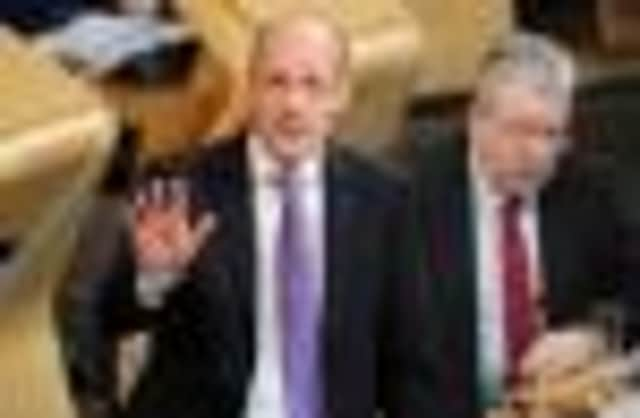Budget analysis: Economic stimulus difficult to achieve within fixed budget


In comparison to the peak public spending year of 2009-10 and the anticipated trough year of 2016-17, CPPR anticipates there will be a £5.5 billion (-18 per cent) fall in real terms (inflation adjusted) spend.
Thus far we have experienced three-quarters of the overall cut in capital spend but only a third of the cut in resource spend. So that means there is still a long way to go.
Advertisement
Hide AdAdvertisement
Hide AdFor the last three years most public sector workers have seen a real-terms fall in their living standards, due to a combination of wage freezes and continuing inflation.
Yesterday John Swinney said that they can expect a 1 per cent increase, as has also been proposed by the Westminster Government for the period 2013-14.
This is still well below the expected rate of inflation and so will result in a further decline in living standards, though not as fast as in earlier years. It remains to be seen how acceptable public sector workers find this proposal.
The finance secretary said that “Today I am announcing a Scottish budget for jobs and growth” and that “this government is doing everything within its limited power to stimulate Scotland’s economy”.
Certainly renewable energy projects are being boosted, with additional capital of £45 million in 2013-14, through drawdown of Scotland’s Fossil Fuel Levy surplus.
However, beyond that it could be argued that key decisions were being taken which did not comply with such a claim.
For example, in 2013-14, while the enterprise bodies and tourism budgets together rise by £8m in cash terms, the NHS budget rises by £263m and while Council Tax is frozen, business rates are rising.
While these budget preferences may be defended on social grounds, it is difficult to support them on economic growth grounds.
Advertisement
Hide AdAdvertisement
Hide AdThe Scottish Government is also keen to produce a short-term economic stimulus and Mr Swinney has managed to release some extra funds to help with this.
Unfortunately for him, any further stimulus is very difficult to achieve within a fixed budget.
For example, shifting funds from the resource budget to the capital budget may be good for long-run economic and jobs prospects but it is not necessarily good for short run job prospects.
At best the shift is jobs neutral, at worst it may employ fewer people, as capital spend tends to be less labour intensive.
This is just the latest episode in a continuing saga of declining budgets that has at least another three years to run beyond 2013-14. With each year the pressure to improve public sector wage settlements will rise, adding further pressure on the Scottish Government to find savings that do not affect the quantity or quality of services provided.
At present 2016-17 is expected to signal the end of this decline, but that depends on economic growth re-emerging.
Without it the pain could be extended even further.
• John McLaren is an economist with the Centre for Public Policy for Regions.